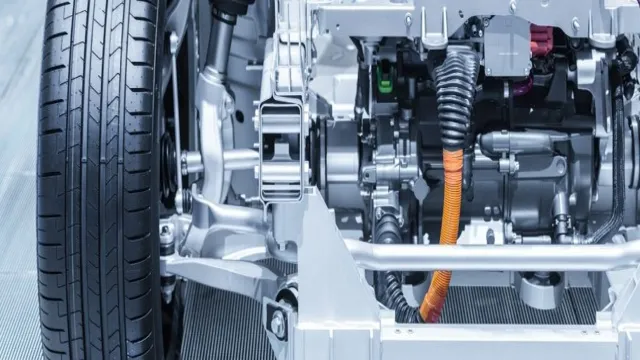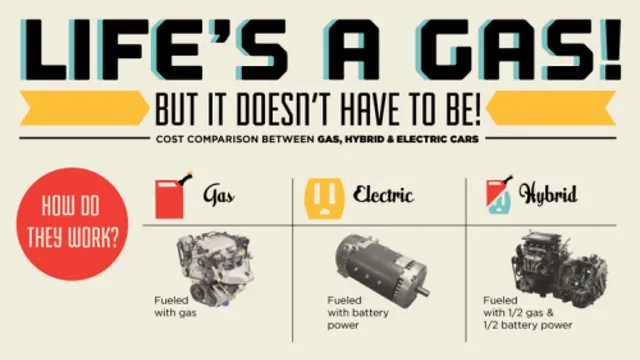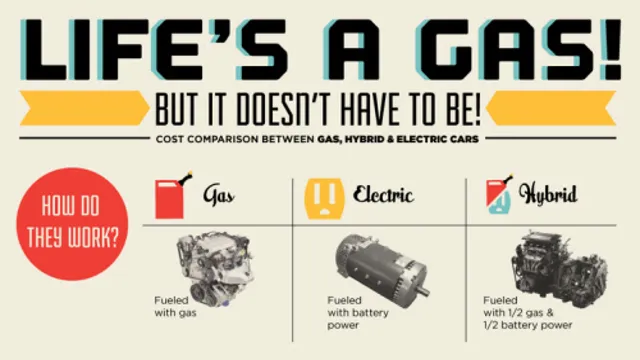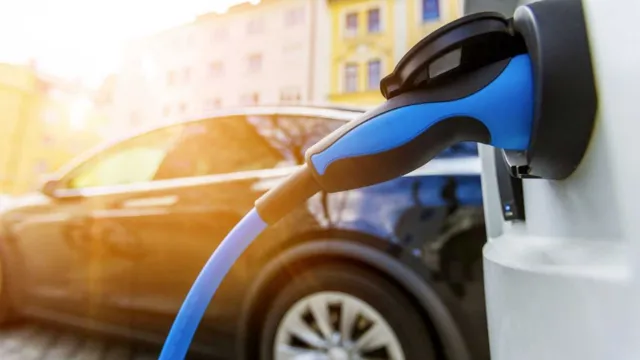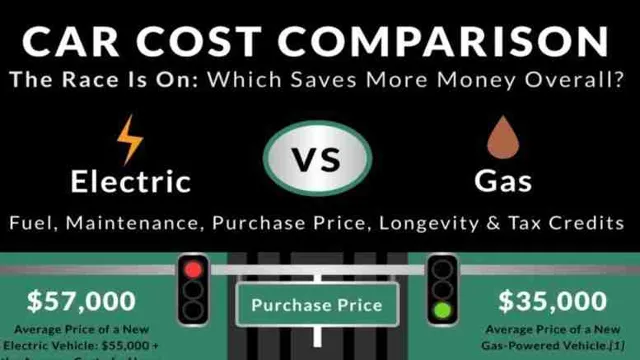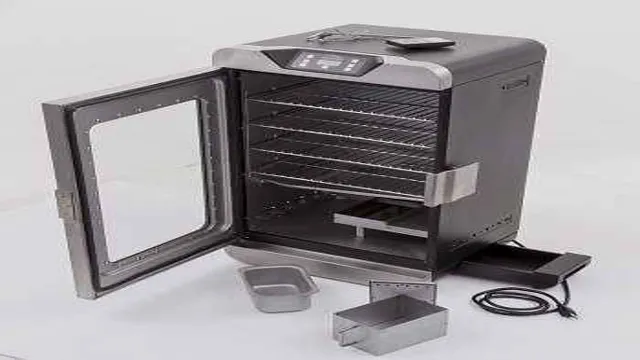Powering Up Your Electric Car: Simple Yet Essential Tips for Maintenance
Electric cars are becoming increasingly popular as we become more environmentally conscious. However, owning an electric car comes with the responsibility of properly maintaining it to ensure its longevity and efficiency. But with so many new technologies and systems, it might be daunting for first-time electric car owners to know where to start.
Fear not! In this blog post, we’re going to share some tips and tricks to help you maintain your electric car. From simple things like checking your tire pressure to more technical aspects like understanding battery health, we’ve got you covered. Follow these tips and tricks, and you’ll be able to keep your electric car in tip-top condition for years to come.
Regular Maintenance is Key
If you’re a proud owner of an electric car, regular maintenance is the key to keeping it running smoothly and efficiently over the years. Keeping your electric car in good condition requires a bit more attention than a regular gas-powered vehicle, but it’s worth it! Firstly, ensure that you’re following the manufacturer’s guidelines for servicing, and bring your car in for regular check-ups, oil changes, and tire rotations. Secondly, keep an eye on your battery’s lifespan and capacity, and avoid letting it drain beyond 20%.
Additionally, make sure your brakes are in top condition, as regenerative braking is a significant component to how electric cars save energy. Regular maintenance is essential for the longevity and efficiency of your electric car, and it can save you from expensive repairs down the line. So, take care of your car, and it will take care of you!
Check Tire Pressure & Alignment
Maintaining proper tire pressure and alignment is crucial for the safety and longevity of your vehicle. Regular maintenance is the key to ensuring that your tires perform optimally, providing you with a smooth ride and better fuel efficiency. Neglecting tire pressure and alignment can lead to uneven wear, decreased traction, and a higher risk of accidents.
To check your tire pressure, you can use a tire pressure gauge or visit a local service station. Proper tire pressure is usually indicated on a sticker in the driver’s side door frame. It’s important to check your tire pressure at least once a month and before embarking on a long road trip.
In addition, you should also inspect your tires for any visible damage such as punctures or cuts. Alignment, on the other hand, refers to the suspension system that connects your wheels to your vehicle. Over time, this system can wear out or get knocked out of alignment due to a collision or hitting a curb.
Signs of poor alignment include uneven tire wear, shaking or pulling to one side while driving, and steering wheel vibration. A professional mechanic can check your alignment and make any necessary adjustments to restore it to factory specifications. In conclusion, regular maintenance of your vehicle’s tire pressure and alignment is essential for optimal performance and safety.
By keeping a close eye on these aspects of your vehicle, you can prevent costly repairs and enjoy a smoother, more fuel-efficient ride. So the next time you hit the road, take a moment to ensure your tires are in good shape. Your car (and wallet) will thank you for it!
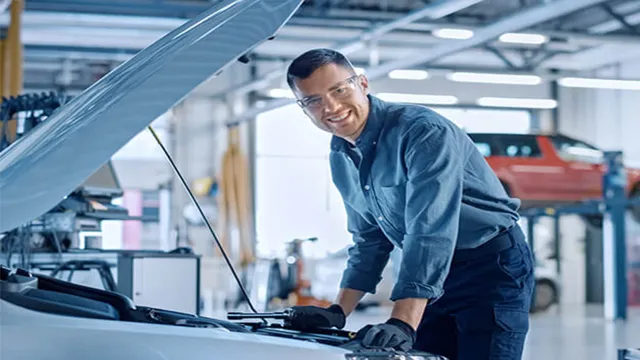
Monitor Brake & Cooling Systems
Regular brake and cooling system maintenance is essential for ensuring that your vehicle’s performance and your safety are not compromised. Neglecting these vital components can result in costly repairs, decreased fuel efficiency, and even accidents. It’s important to have your brakes inspected regularly, as worn-out brake pads can cause your car to take longer to stop and increase the risk of rear-end collisions.
Your cooling system also needs attention, as a poorly maintained system can cause your engine to overheat and suffer irreparable damage. Don’t wait until a problem arises – make sure you are scheduling routine inspections and servicing to keep your car running smoothly. Remember: a well-maintained vehicle is a safe and reliable one.
Regularly Charge the Battery
Keeping your electric vehicle’s battery fully charged is a key component to regular maintenance. Just like any other battery, lithium-ion batteries found in electric cars gradually lose their charge over time. Regularly charging the battery helps maintain its full capacity and extends its overall lifespan.
Not only that, but a regularly charged battery also provides optimal performance, allowing your vehicle to achieve its maximum range. Think of it like a phone battery – you wouldn’t want your phone to die mid-day, right? The same goes for your electric car. So make sure you keep your battery charged to ensure you can get the most out of your vehicle and avoid any unexpected stops along the way.
Keep It Clean
If you want to maintain your electric car in the best possible condition, keeping it clean is essential. Dirt, grime, and dust can all build up over time and cause damage to your car’s paint and mechanical components. You should make sure to wash your car regularly, using a gentle soap and water.
Avoid using harsh chemicals or abrasive tools that could scratch your car’s surface. It’s also important to keep the interior of your car clean by regularly vacuuming and wiping down surfaces. A clean car not only looks better, but it also functions better, so don’t neglect this simple but crucial step in electric car maintenance.
Exterior Cleaning Tips
A clean exterior not only enhances your home’s curb appeal but also helps to protect it from damage and deterioration. To keep your home looking its best, it’s essential to clean the exterior regularly. One of the easiest ways to do this is to use a pressure washer.
Pressure washing can remove dirt, grime, and even mold and mildew from your home’s exterior. However, it’s important to be careful when using a pressure washer, as too much force can damage your siding or cause water to seep into your home. Another way to keep your home’s exterior clean is to wash it by hand using a mild detergent and a soft brush or sponge.
This method is less powerful but can still remove dirt and grime effectively. Regular cleaning will help your home stay looking beautiful and well-maintained for years to come. So, don’t forget to keep it clean!
Interior Cleaning Tips
Keeping your interior clean is essential to maintaining a fresh and healthy atmosphere in your home or office. With a few simple tricks, you can easily keep your interiors clean and organized. Firstly, it’s important to wipe down surfaces and vacuum regularly to ensure that dust and dirt don’t build up over time.
Additionally, using a microfiber cloth and all-purpose cleaner can be effective in cleaning stubborn stains and grime. For furniture and upholstery, using a fabric brush or lint roller can help to remove any pet hair or debris. Lastly, don’t forget to clean air vents and replace air filters regularly to improve air quality.
By following these tips, you can keep your interiors looking and feeling clean all year long.
Weather Considerations
Maintaining an electric car requires consideration of various factors, including weather conditions. Extreme temperatures can affect the battery life, causing it to drain faster in cold weather and reducing its efficiency in hot weather. Therefore, it is crucial to keep the vehicle in a temperature-controlled environment, such as a garage.
Moreover, it is recommended to preheat or cool the car while still plugged in to save battery power. Windshield wipers and heaters also consume a considerable amount of energy, and it is best to minimize their usage to extend the vehicle’s range. Regularly cleaning the car’s exterior and undercarriage is also essential in rainy or snowy weather as salt, and debris can cause corrosion and damage to the electric car’s delicate systems.
Overall, taking note of weather conditions and adapting the driving habits and routine accordingly can go a long way in maintaining an electric car and increasing its longevity.
Extreme Heat & Cold Maintenance
As the seasons change, extreme weather conditions can put a strain on our homes’ maintenance. Extreme cold weather can cause pipes to freeze and burst, while extreme heat can lead to air conditioning units overworking and breaking down. It’s essential to ensure that your home’s systems are checked and maintained before the weather hits.
Regular inspections of your pipes can prevent any issues from arising, and it’s important to make sure that your HVAC unit is serviced frequently to avoid any significant breakdowns in the middle of a heatwave. Don’t wait until it’s too late – weatherproof your home today to ensure that it can withstand any weather conditions that come its way.
Impact of Rain and Snow on the Car
As a car owner, it’s crucial to consider the weather conditions your vehicle will face, especially during rain and snow. Rain and snow could cause significant damage to your car, leading to costly repairs and compromising its safety. Rainwater can seep through the cracks and compromise the metal and electrical components of your car.
It can also reduce visibility while driving and affect the vehicle’s performance, causing accidents. Similarly, snow can also damage your vehicle’s exterior, especially if you park outside. If snow accumulates on the car and remains for an extended period, it can cause rust, and when it melts, it can cause water damage and mechanical problems.
Therefore, it’s essential to take steps to protect your car from harsh weather conditions by keeping it in a garage, applying protective wax, and regularly washing and drying it after exposure to rain and snow. By doing so, you’ll extend your car’s longevity, maintain its value, and keep it safe for both you and your passengers.
Work with Professionals
Maintaining an electric car may sound like a daunting task, but with the right knowledge and help from professionals, it can be handled with ease. Regular maintenance is important to keep your electric car running efficiently and smoothly. This includes checking the battery, brakes, tires, and other essential parts.
While some basic maintenance tasks can be done on your own, it is always best to work with professionals to ensure that everything is in top shape. They will have the specialized knowledge and equipment needed to diagnose and fix any issues. By working with professionals, you can also benefit from their advice on how to prolong the life of your electric car and optimize its performance.
Overall, making a decision to maintain your electric car properly will save you money in the long run and ensure that your vehicle is running at its best.
Conclusion
In summary, maintaining an electric car may seem daunting, but it’s fairly simple with regular charging, tire rotations, brake checks, and keeping it clean. It’s like having a plant – you need to water it, give it sunlight and occasionally trim it. Plus, with electric cars, you’re doing your part for the environment, and there’s nothing more stylish than being eco-friendly.
So, charge up and hit the road, and remember to always give a friendly nod to fellow electric car owners – it’s like being part of a secret club that’s saving the planet one mile at a time!”
FAQs
How often should an electric car be serviced?
Most manufacturers recommend servicing an electric car once a year or every 10,000 miles, whichever comes first.
Can I charge my electric car at home?
Yes, you can charge your electric car at home using a Level 1 or Level 2 charging station. It’s also important to ensure that your home’s electrical system is properly equipped to handle the charging needs of your electric car.
How long does it take to charge an electric car?
The charging time for an electric car depends on the charging speed of the charging station and the size of the car’s battery. On average, a Level 2 charging station can fully charge a medium-sized electric car in 4-5 hours.
Can I travel long distances in an electric car?
Yes, many electric cars now have a range of 200-300 miles or more on a single charge. However, it’s important to plan your route and charging stops ahead of time, as charging infrastructure may not yet be as widespread as traditional gas stations.

